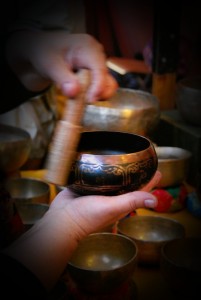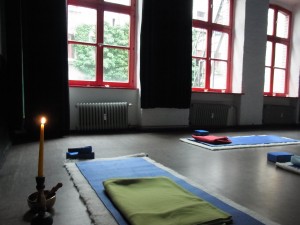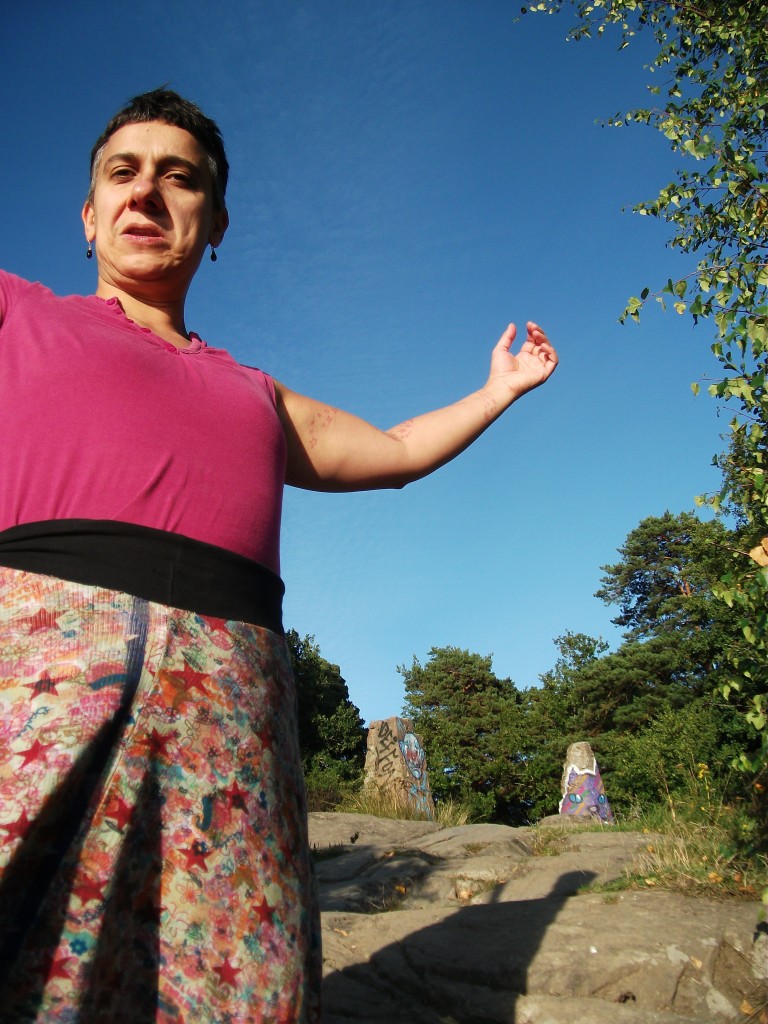This Thursday, Natalie Kakon joins us as a guest teacher in our community class: “Unwind and release; allow your stress to slip away by yoking to a feeling of infinite space within the body. Learn how to expand your chest and lengthen your spine with the support of blocks, blankets and chairs. Bring your body back to its individual balance while connecting to a deep sense of relaxation. Join us for a restorative, yin practice.”

What?: Restorative Yoga with Natalie Kakon
Where?: At the English Yoga Berlin studio
When?: Thursday, November 7, from 15h45 till 17h15
How much?: Donation based/pay what you can
Our weekly Restorative Yoga class with Juli happens every Sunday evening at 18h in our Kreuzberg yoga studio.
Why Restorative Yoga?
In our everyday lives, we are often encouraged to push further, achieve more, do more, be more social, be more productive, fill our days with activities and take on more work. It is easy to lose sight of our own capacities, our own limits, and we can push ourselves beyond them without nurturing the support structure that we need to maintain a healthy balance, inviting stress, anxiety, injuries or illness. A restorative yoga practice (as well as yoga nidra and other practices that focus on relaxation) can help to rejuvenate the body and mind after pushing too far, thereby fostering balance. Once we know our limits and have nurtured them we can then gently (and with support) test the waters and play at the edges.
Expanding our limits (and moving beyond our comfort zone) can cause great rewards such as opening our minds to new concepts, becoming more flexible or physically strong, and strengthening our empathy towards other people. But it’s not possible to find balance if all we feel is stress, low energy and burn out. Restorative yoga activates the parasympathetic nervous system, which is responsible for nurturing our bodies and restoring them to health. When we are in a rushed and high-energy state, our bodies activate the ‘sympathetic nervous system,’ which is responsible for releasing certain chemicals to keep us going, so that we can react quickly and do more within a shorter period of time – a state of fight-or-flight. These chemicals can linger in the body until the parasympathetic nervous system kicks in to counter them. And we can remain in this state long after the specific things that have caused us anxiety or stress have ended. This is why we sometimes feel that ‘relaxing’ (meeting friends, watching TV, reading a book) cannot rejuvenate us. We may have trouble sleeping or have anxious dreams, which only perpetuate the feeling of urgency, stress, and low energy.
What is Restorative Yoga?
The only way to counter these effects in our body is with complete and total concentrated relaxation. Activities that remove distractions, such as meditation, sitting by a fire, or going for a solitary walk can help. Yoga Nidra and Restorative Yoga are specifically designed to activate the parasympathetic nervous system, so that the body and mind can restore to balance. Restorative Yoga is based on the Iyengar tradition of using props to support the body during poses.
Some of these poses were adapted by Judith Lasater for a restorative practice, so that deep relaxation could occur by holding positions longer (up to 15 minutes) with the support of bolsters, blocks, chairs, pillows and blankets. The body is positioned in such a way that it is totally supported, without the need to either stretch the muscles or use their power. A restorative pose should be very very comfortable and relaxing so that the muscles of the body can decompress, and the mind can completely unwind, fostering the release of chemicals from the parasympathetic nervous system. A restorative yoga class may contain some gentle flow or Hatha poses before moving into the longer-held restorative poses.
The classes we do at English Yoga Berlin incorporate a gentle flow, along with some chair-supported Hatha poses (beneficial for those needing to strengthen their bones and joints because of Osteoporosis or Arthritis). Our community class guest teacher, Natalie Kakon, will incorporate some Yin poses in her class. Yin poses use gravity to help open up the body to deeper stretches, encouraging more flexibility. Yin yoga is about finding the edge of your limit and breathing through it to open up a little more space. This particular combination of restorative and yin poses can be very juicy, as it can support the return to balance as well as gently push the edges all in one class!
 Weds, 30 July, 2014
Weds, 30 July, 2014



 See our
See our  The trajectory of yoga over the centuries has seen a variety of different practices, styles, and approaches. What was originally a method of exercise for elite, higher-caste men in order to sit longer in meditation to achieve enlightenment has been
The trajectory of yoga over the centuries has seen a variety of different practices, styles, and approaches. What was originally a method of exercise for elite, higher-caste men in order to sit longer in meditation to achieve enlightenment has been 







